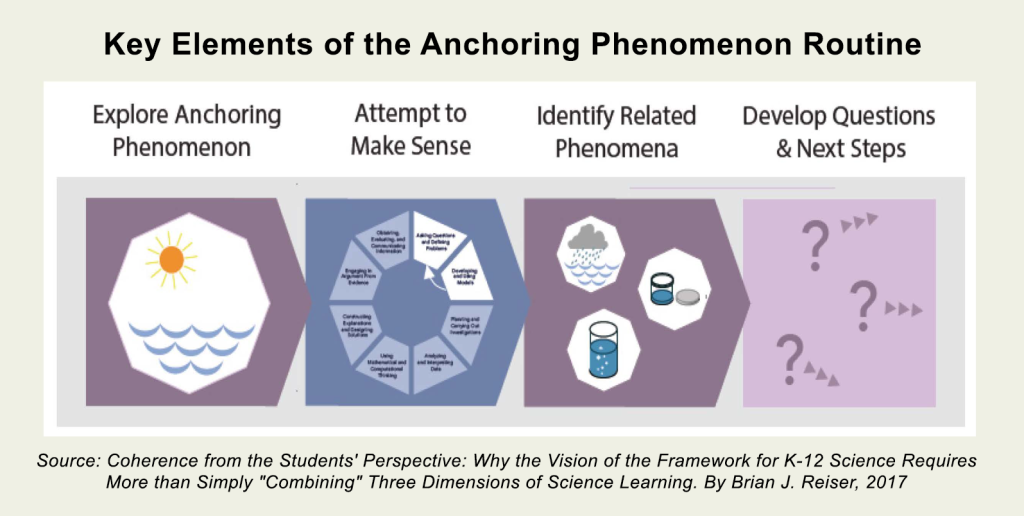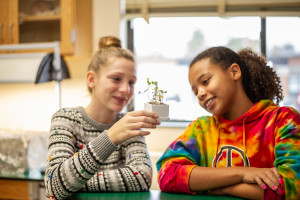Dihybrid genetics versus Monohybrid Inheritance Patterns: Which to choose?
Wisconsin Fast Plants seed lines offer both mono- and dihybrid inheritance options for teaching genetics. So, when might you choose the dihybrid model? Answering that question is discussed in this article in the context of planning for how we facilitate genetics investigations with Fast Plants. In other words, we focus here primarily on how dihybrid (or monohybrid) investigations can be structured so that students engage with genuine sense-making and meaningful scientific practices. Then, depending on your teaching context, you can make a sound decision about whether to use a mono- or dihybrid inheritance model for teaching genetics
Purposes for engaging students with different inheritance models
 We use inheritance models that students can observe firsthand with model organisms such as Wisconsin Fast Plants to create opportunities for deep learning about genetics. And our intention in doing this is for students to build conceptual understanding rather than engage in rote memorization. For example, when students engage with a Fast Plants “Who’s the Father?” genetics investigation, they observe and identify inheritance patterns, then reason and communicate explanations for those patterns. In this modeling approach to teaching genetics, students must develop, test, and defend explanatory models for an observed inheritance pattern. Similarly, there are guided investigations and a variety of ways to engage students with sense-making involving monohybrid inheritance patterns. So, what are the advantages of teaching with a dihybrid cross?
We use inheritance models that students can observe firsthand with model organisms such as Wisconsin Fast Plants to create opportunities for deep learning about genetics. And our intention in doing this is for students to build conceptual understanding rather than engage in rote memorization. For example, when students engage with a Fast Plants “Who’s the Father?” genetics investigation, they observe and identify inheritance patterns, then reason and communicate explanations for those patterns. In this modeling approach to teaching genetics, students must develop, test, and defend explanatory models for an observed inheritance pattern. Similarly, there are guided investigations and a variety of ways to engage students with sense-making involving monohybrid inheritance patterns. So, what are the advantages of teaching with a dihybrid cross?
Simply put, we can choose to use monohybrid vs. dihybrid inheritance patterns depending on the pattern complexity we want students to explain. Monohybrid, dominant/recessive allele inheritance patterns are great for yielding evidence similar to what Mendel used to make profound genetic inferences. However, students with strong prior genetics learning experiences may easily recognize the typical 3:1 monohybrid phenotypic ratio. If that is the case, then students may opt to produce vocabulary-laden pseudo-explanations intended to please the teacher rather than engaging in rigorous analysis practices (Berland et al., 2015). Therefore, choosing to use a dihybrid inheritance pattern as the phenomenon to be explained can be an effective strategy for challenging students to more purposefully make sense of underlying genetics processes.

Another motivation for using a dihybrid inheritance model can be to delve more deeply into the law of independent assortment. Further, some dihybrid crosses can be used to explore genetic linkage and non-Mendelian phenotypic ratios that result when alleles of two genes are located in close proximity to each other on the same chromosome. However, at this time there are no dihybrid crosses in Wisconsin Fast Plants that demonstrate linkage. So, currently any dihybrid investigation with Fast Plants will produce inheritance patterns that can be explained by the law of independent assortment.
3-D Learning Involves Purposeful Engagement with Science Practices
Teaching genetics by having students directly observe inheritance patterns in a model organism, then grapple with developing an explanation for their observations can be a powerful learning opportunity. In contrast, providing students with phenotypic story problems to be solved using a Punnett Square typically over-emphasizes solution-procedures and rote use of skills, rather than the rigorous work of scientific knowledge construction and evaluation (Berland et. al, 2015). In the case of students making sense of dihybrid inheritance patterns, multiple important science practices can be emphasized for genuine 3-D learning.
From those Practices described by the Next Generation Science Standards (NGSS), Planning and Carrying Out Investigations is likely to be most apparent in the work associated with a Fast Plants genetics investigation. One element in this practice, NGSS describes for students to be able to:
Plan and conduct an investigation individually and collaboratively to produce data to serve as the basis for evidence, and in the design: decide on types, how much, and accuracy of data needed to produce reliable measurements and consider limitations on the precision of the data (e.g., number of trials, cost, risk, time), and refine the design accordingly (NGSS Lead States, 2013. p. 55).
Building on this NGSS description, we emphasize the importance of including in genetics investigation opportunities for students to engage in establishing norms for data collection. This seemingly small aspect of the investigation could be handled procedurally, telling students to observe seedlings and score this phenotype as purple stem, and that phenotype as rosette, etc. However, that approach misses a powerful learning opportunity for students to purposefully engage in a key science practice.
Engaging Students in the Practice of Establishing Data Collection Norms
Actively engaging students in figuring out how to collect and report their phenotypic Fast Plants observations can be a powerful learning opportunity. Students can then realize how data collection norms are essential for sharing information within small groups and across the classroom learning community. Engaging students in this pivotal practice can be overlooked in the rush to gather data for analysis. However, skipping the work of negotiating norms and standards undermines the authenticity of engaging fully in the practice of planning and conducting an investigation collaboratively.

A great example of the importance of data acquisition planning can be found in the supporting materials for citizen science and crowd-sourced data collection projects. Using the US government’s site on citizen science (and their free toolkit), students could compare their process of negotiating data collection standards for Fast Plants phenotypes to citizen science project recommendations for data management.
 Recently, the Wisconsin Fast Plants Program developed a set of photographs and discussion prompts for use in engaging students who are investigating dihybrid inheritance patterns. This tool is designed for use in investigations where students observe Fast Plants seedlings germinated on paper towel from parental, F1 and F2 generations from a Rosette and Non-purple stem dihybrid cross. Photographs of seedlings similar to what students will observe firsthand can be used as a catalyst for discussion about setting standards for identifying and reporting data. These resources are intended as tools to support students attempting to make sense of the phenotypic observations, rather than for procedural instruction.
Recently, the Wisconsin Fast Plants Program developed a set of photographs and discussion prompts for use in engaging students who are investigating dihybrid inheritance patterns. This tool is designed for use in investigations where students observe Fast Plants seedlings germinated on paper towel from parental, F1 and F2 generations from a Rosette and Non-purple stem dihybrid cross. Photographs of seedlings similar to what students will observe firsthand can be used as a catalyst for discussion about setting standards for identifying and reporting data. These resources are intended as tools to support students attempting to make sense of the phenotypic observations, rather than for procedural instruction.
Using these materials students can collectively establish phenotypic criteria, then practice assessing if a seedling is the purple or non-purple stem phenotype and rosette or standard stature. As a result of genuinely engaging in this practice, students will collect more accurate data that can be shared across groups to produce a viable sample size for analysis. In addition, students can reflect on their work to build appreciation for and understanding of science practices overall.
Rather than providing students with an “answer key” for scoring seedlings as purple or non-purple and rosette vs. standard stature (similar to the photo above) they are shown photos similar to what they will observe–a mix of seedlings, some of which have ambiguous phenotypes. In this way, the tool supports students to genuinely engage in the practice of establishing norms for data collection and recognizing its importance in producing high quality data.

Conclusion
Dihybrid genetics investigations, using Wisconsin Fast Plants as a model organism set the stage for genuine 3-D learning. When taught with a rigorous 3-D learning approach, students have opportunities for rich knowledge construction on many levels. Specifically, by intentionally making time for students to grapple with establishing standards and norms for data collection, they are afforded opportunities to appreciate the impact of this practice on data quality and shareability. In this way, we can teach genetics concepts in the true spirit of 3-D learning.
FAST PLANT RESOURCES

A Classroom Model for Teaching Natural and Artificial Selection on Your Schedule


Teachers’ Guide to Classroom Grow Lights for Healthy Fast Plants


How to Teach the Crosscutting Concepts with Wisconsin Fast Plants





